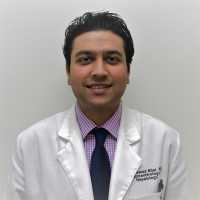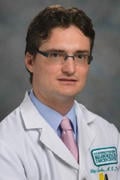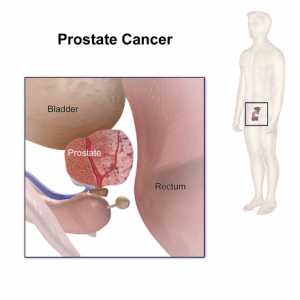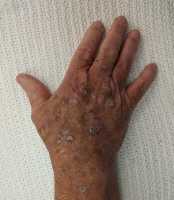More Patients With Bariatric Surgery Admitted for Gallstone-Related Biliary Disease
Why Are So Many People Near-Sighted?
Cutting Out Bacon, Sausage and Hot Dogs May Reduce Risk of Breast Cancer
 Maryam Farvid, Ph.D., Research Scientist
Department of Nutrition
Harvard T.H. Chan School of Public Health
Boston, MA 02115
MedicalResearch.com: What is the background for this study? What are the main findings?
Response: Prior prospective studies on red and processed meat consumption with risk of breast cancer have produced inconsistent results.
Current meta-analysis of 15 prospective studies shows that women who eat a high amount of processed meat each day may have a higher risk of breast cancer than those who don't eat or have a low intake in their diet. (more…)
Maryam Farvid, Ph.D., Research Scientist
Department of Nutrition
Harvard T.H. Chan School of Public Health
Boston, MA 02115
MedicalResearch.com: What is the background for this study? What are the main findings?
Response: Prior prospective studies on red and processed meat consumption with risk of breast cancer have produced inconsistent results.
Current meta-analysis of 15 prospective studies shows that women who eat a high amount of processed meat each day may have a higher risk of breast cancer than those who don't eat or have a low intake in their diet. (more…)Most Eye Trauma Occurs in Elderly After a Fall
 Syed Mahmood Ali Shah, M.D.
Associate Professor of Ophthalmology
University of Pittsburgh School of Medicine
MedicalResearch.com: What is the background for this study? What are the main findings?
Response: Eye trauma is a significant cause of morbidity throughout the world. In the United States, the incidence of individuals hospitalized with eye trauma from 2001 through 2014 increased. Most of these individuals were above the age of 65 and suffered a fall. This is a worrisome trend in light of an increased awareness and continued and concentrated effort to reduce falls. This is a critical point: We need to improve our existing strategies to reduce falls.
The second at-risk group is children and adolescents. Previous studies have shown that effective widespread implementation of injury prevention efforts can lower trauma rates. While we did observe a small decrease in eye trauma as a primary admitting diagnosis, the fact that it was more common in children and adolescents (for whom eye trauma carries devastating consequences and can significantly reduce quality of life) highlights the significance of continued efforts to prevent eye trauma. (more…)
Syed Mahmood Ali Shah, M.D.
Associate Professor of Ophthalmology
University of Pittsburgh School of Medicine
MedicalResearch.com: What is the background for this study? What are the main findings?
Response: Eye trauma is a significant cause of morbidity throughout the world. In the United States, the incidence of individuals hospitalized with eye trauma from 2001 through 2014 increased. Most of these individuals were above the age of 65 and suffered a fall. This is a worrisome trend in light of an increased awareness and continued and concentrated effort to reduce falls. This is a critical point: We need to improve our existing strategies to reduce falls.
The second at-risk group is children and adolescents. Previous studies have shown that effective widespread implementation of injury prevention efforts can lower trauma rates. While we did observe a small decrease in eye trauma as a primary admitting diagnosis, the fact that it was more common in children and adolescents (for whom eye trauma carries devastating consequences and can significantly reduce quality of life) highlights the significance of continued efforts to prevent eye trauma. (more…)Association of Disorganization of Retinal Inner Layers With Visual Acuity Response to Anti-VGEF Therapy for Macular Edema Secondary to Retinal Vein Occlusion
Errors in Dementia Drugs Surprising Common in Parkinson’s Disease
Black-White Hypertension Divide: Is The Southern Diet a Culprit?
Gene Variants Can Alter Glucose Absorption and Cardiometabolic Risks
Drinking More Water May Reduce Frequency of Urinary Tract Infections
 Professor Yair Lotan MD
Chief of Urologic Oncology
Holder of the Helen J. and Robert S. Strauss Professorship in Urology
UT Southwestern Medical Center at Dallas
Department of Urology
Dallas, Texas 75390-9110
MedicalResearch.com: What is the background for this study? What are the main findings?
Response: Urinary tract infections are extremely common in women and many women experience recurrent episodes which impact their quality of life. There are also many women who do not drink as much water as is recommended.
This study found that in healthy women with recurrent UTIs who drink less than 1.5 liters per day, the additional intake of 1.5 liters of water daily reduced the risk of recurrent infections by nearly 50%. (more…)
Professor Yair Lotan MD
Chief of Urologic Oncology
Holder of the Helen J. and Robert S. Strauss Professorship in Urology
UT Southwestern Medical Center at Dallas
Department of Urology
Dallas, Texas 75390-9110
MedicalResearch.com: What is the background for this study? What are the main findings?
Response: Urinary tract infections are extremely common in women and many women experience recurrent episodes which impact their quality of life. There are also many women who do not drink as much water as is recommended.
This study found that in healthy women with recurrent UTIs who drink less than 1.5 liters per day, the additional intake of 1.5 liters of water daily reduced the risk of recurrent infections by nearly 50%. (more…)Insufficient Sleep in Adolescence May Be A Driver of Risky Behaviors
Trial Demonstrates Efficacy of Injecting Bacterial Spores Into Resistant Cancerous Tumors
Genetic Risk Score Improves Ability To Predict Diabetics at Risk of Coronary Disease
MedicalResearch.com Interview with: [caption id="attachment_44905" align="alignleft" width="200"] Dr. Morieri[/caption] Mario Luca Morieri MD Section on Genetics and Epidemiology, Research Division, Joslin Diabetes Center Department...
Study Identifies Viral Protein That Allows HPV-Associated Head/Neck Cancers to Spread
What Types of Health Care Records Are Breached?
MedicalResearch.com Interview with: [caption id="attachment_44776" align="alignleft" width="200"] Dr. McCoy[/caption] Thomas McCoy, M.D. Assistant Professor of Psychiatry Massachusetts General Hospital Psychiatry Massachusetts General Hospital MedicalResearch.com: What is the...
Big Survival Differences in Out-of-Hospital Cardiac Arrest Between EMS Agencies
Number of Knee Arthroscopic Procedures Declines
Most Patients Who Carry BRCA1/2 Pathogenic Variants Are Unaware
High-Risk Gleason 5 Prostate Cancers Not Resistant to Androgen Deprivation Therapy
Medicare Spends Hundreds of Millions Annually to Treat Precancerous Skin Lesions
 Howa Yeung, MD
Assistant Professor of Dermatology
Emory University School of Medicine
Atlanta, GA 30322
MedicalResearch.com: What is the background for this study? Would you briefly explain what is meant by actinic keratoses?
Response: Actinic keratoses are common precancerous skin lesions caused by sun exposure. Because actinic keratoses may develop into skin cancers such as squamous cell carcinoma and basal cell carcinoma, they are often treated by various destructive methods. We used Medicare Part B billing claims to estimate the number and cost of treated actinic keratoses from 2007 to 2015.
MedicalResearch.com: What are the main findings?
Response: While the number of Medicare Part B beneficiaries increased only moderately, the number of actinic keratoses treated by destruction rose from 29.7 million in 2007 to 35.6 million in 2015. Medicare paid an average annual amount of $413.1 million for actinic keratosis destruction from 2007 to 2015. Independently billing non-physician clinicians, including advanced practice registered nurses and physician assistants, are treating an increasing proportion of actinic keratosis, peaking at 13.5% in 2015.
MedicalResearch.com: What should readers take away from your report?
Response: Readers should understand that the burden of actinic keratosis treatment is increasing in the Medicare population. There is also an increasing proportion of actinic keratoses being treated by advanced practice registered nurses and physician assistants. (more…)
Howa Yeung, MD
Assistant Professor of Dermatology
Emory University School of Medicine
Atlanta, GA 30322
MedicalResearch.com: What is the background for this study? Would you briefly explain what is meant by actinic keratoses?
Response: Actinic keratoses are common precancerous skin lesions caused by sun exposure. Because actinic keratoses may develop into skin cancers such as squamous cell carcinoma and basal cell carcinoma, they are often treated by various destructive methods. We used Medicare Part B billing claims to estimate the number and cost of treated actinic keratoses from 2007 to 2015.
MedicalResearch.com: What are the main findings?
Response: While the number of Medicare Part B beneficiaries increased only moderately, the number of actinic keratoses treated by destruction rose from 29.7 million in 2007 to 35.6 million in 2015. Medicare paid an average annual amount of $413.1 million for actinic keratosis destruction from 2007 to 2015. Independently billing non-physician clinicians, including advanced practice registered nurses and physician assistants, are treating an increasing proportion of actinic keratosis, peaking at 13.5% in 2015.
MedicalResearch.com: What should readers take away from your report?
Response: Readers should understand that the burden of actinic keratosis treatment is increasing in the Medicare population. There is also an increasing proportion of actinic keratoses being treated by advanced practice registered nurses and physician assistants. (more…)Factor in Quality of Life When Deciding Radiotherapy vs Surgery in Patients With Oropharyngeal Cancer
MedicalResearch.com Interview with: [caption id="attachment_44703" align="alignleft" width="122"] Dr. Sher[/caption] Dr. David Sher MD MPH Radiation Oncology, Harold C. Simmons Comprehensive Cancer Center UTSouthwestern Medical Center Associate...





























